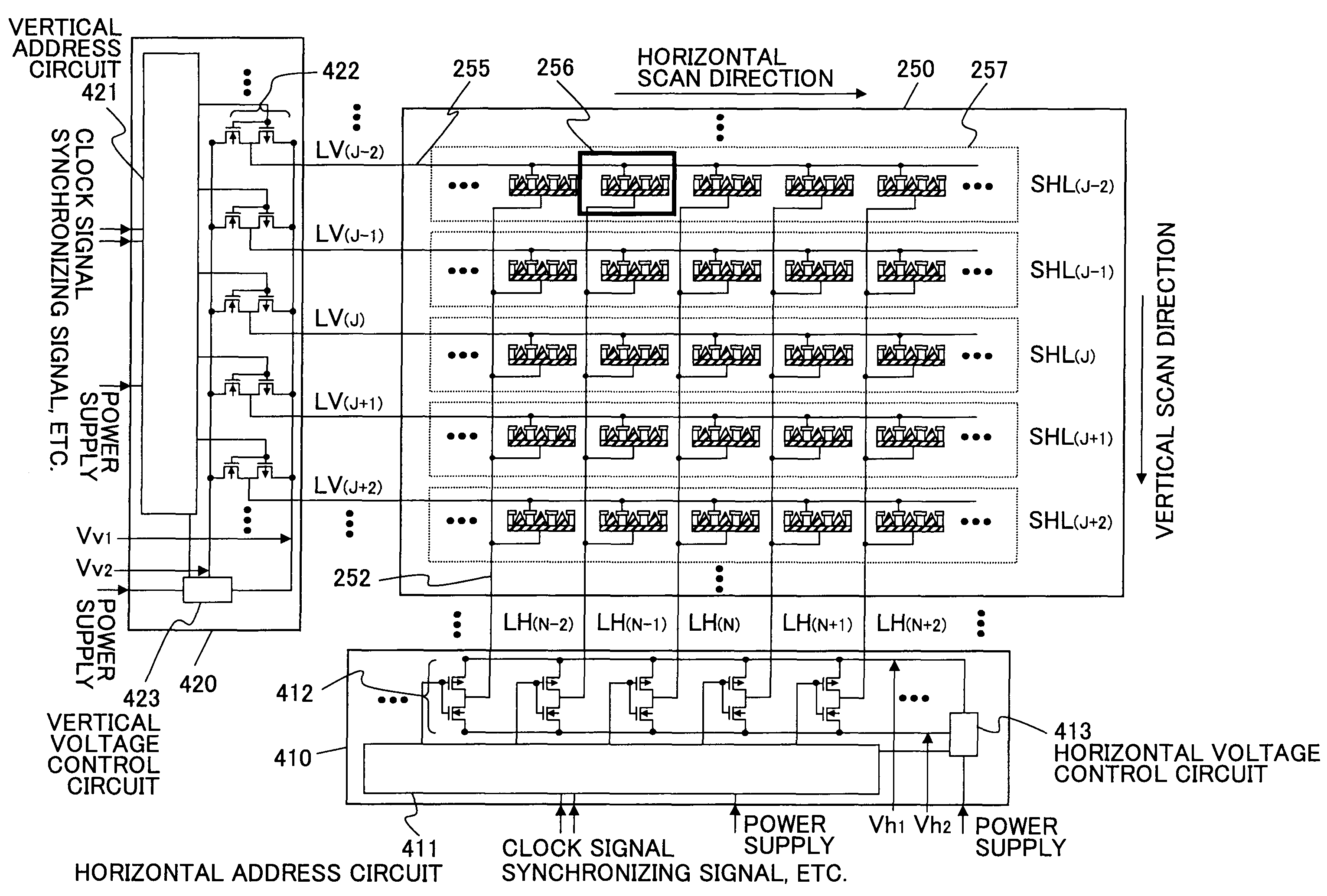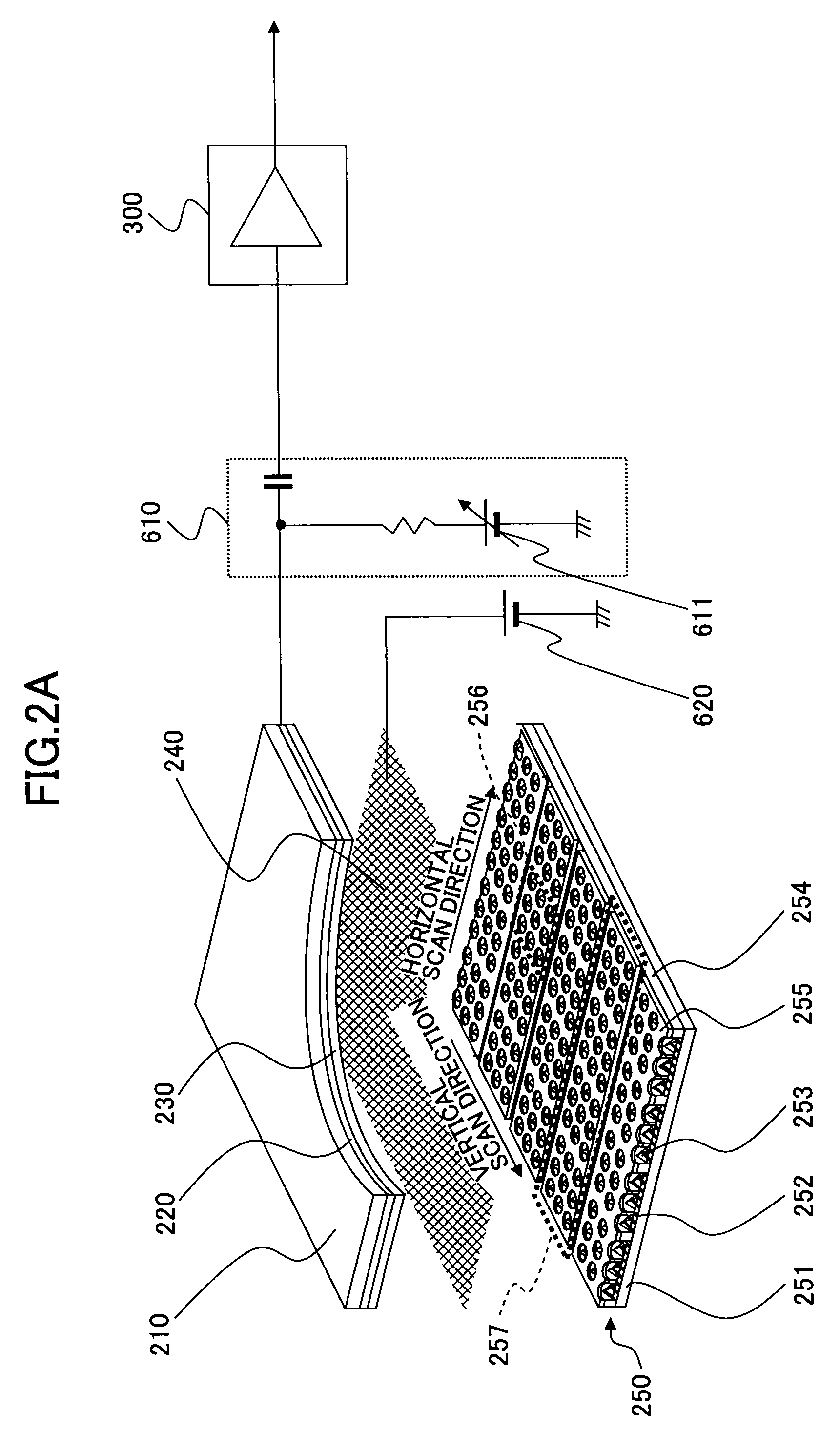Imaging apparatus having electron source array that emits electrons during a blanking period
a technology of electron source array and electron source, which is applied in the field of imaging apparatus, can solve the problems of not being able to read out all, affecting the image quality of the image, and generating large amount of holes in the image, so as to prevent the generation of capacitive or photoconductive residual images, improve image quality, and prevent the effect of image resolution degradation
- Summary
- Abstract
- Description
- Claims
- Application Information
AI Technical Summary
Benefits of technology
Problems solved by technology
Method used
Image
Examples
first embodiment
[0069]FIG. 1 is a schematic cross-sectional view of an imaging apparatus according to a first embodiment. The imaging apparatus of this embodiment includes an optical lens 100, an imaging device 200, a signal amplifying and processing circuit 300, a drive circuit 400, a control circuit 500, and a power supply unit 600.
[0070]The optical lens 100 and the imaging device 200 are arranged such that light passing through the optical lens 100 enters the photoelectric conversion film of the imaging device 200 perpendicularly to form a focus thereon.
[0071]The signal amplifying and processing circuit 300 amplifies and processes video signals output from the imaging device 200.
[0072]The drive circuit 400 includes a horizontal drive circuit 410, a vertical drive circuit 420, etc., and generates pulse voltages necessary to drive the imaging device 200.
[0073]The control circuit 500 generates a clock signal, synchronizing signals, and the like, and supplies these signals to the drive circuit 400 a...
second embodiment
[0155]FIG. 18 is a schematic cross-sectional view of an imaging apparatus according to a second embodiment. The imaging apparatus of the present embodiment differs from the imaging apparatus of the first embodiment in that a memory unit 700 is provided. Due to the provision of the memory unit 700, the configuration and operation of the imaging device 200 also differ from those of the first embodiment. In the following, a description will be given mainly with respect to such differences. The same elements as those of the imaging apparatus of the first embodiment are referred to by the same numerals, and a description thereof will be omitted.
[0156]The memory unit 700 serves to record and store video signals output from the signal amplifying and processing circuit 300. The memory unit 700 may be implemented by use of a known volatile or nonvolatile memory.
[0157]A control circuit 500A reads a video signal that is recorded and stored in the memory unit 700. The control circuit 500A gener...
PUM
 Login to View More
Login to View More Abstract
Description
Claims
Application Information
 Login to View More
Login to View More - R&D
- Intellectual Property
- Life Sciences
- Materials
- Tech Scout
- Unparalleled Data Quality
- Higher Quality Content
- 60% Fewer Hallucinations
Browse by: Latest US Patents, China's latest patents, Technical Efficacy Thesaurus, Application Domain, Technology Topic, Popular Technical Reports.
© 2025 PatSnap. All rights reserved.Legal|Privacy policy|Modern Slavery Act Transparency Statement|Sitemap|About US| Contact US: help@patsnap.com



